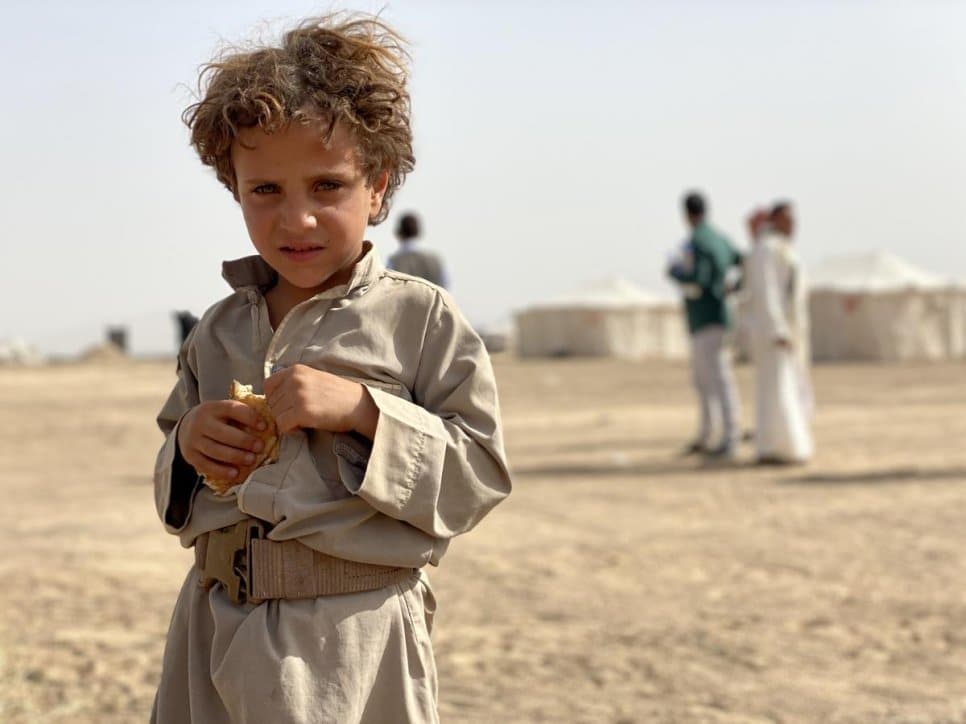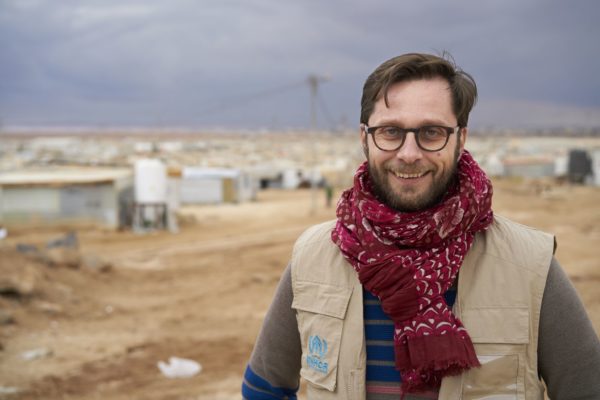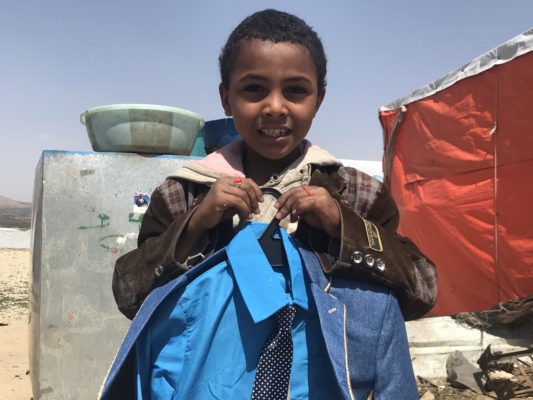
A five-year-old Yemeni boy stands outside a site for internally displaced people in Marib, Yemen, where conflict has forced thousands to flee. © UNHCR/Marie-Joëlle Jean-Charles
After fleeing latest fighting in country’s north, Yemenis describe harrowing route to safety and dire conditions on arrival as humanitarian aid struggles to meet needs.
By UNHCR staff in Marib, Yemen
“We left in the middle of the night, crying, with nothing but the clothes we were wearing,” Nasra, 58, said. “Some of us had left with no shoes on. We walked through the desert for three days, with no food and no water.”
They made the harrowing trek to safety alongside hundreds of others, eventually finding shelter in a site for the displaced in Al Suwayda, near the city of Marib. Since the end of January, more than 40,000 people – mostly women and children – have fled to the area. Marib now hosts 750,000 displaced Yemenis, who outnumber the city’s original population of 500,000.
The latest influx has put even more pressure on overstretched services and humanitarian assistance, leading to desperate living conditions for those like Nasra who arrived with nothing, despite the best efforts of UNHCR, the UN Refugee Agency, and its partners such as the International Organization for Migration (IOM).
“They gave us tents but they are already damaged by the wind,” Nasra explained. “We have little food. There is no water. No toilets. No doctor. My daughter is eight months pregnant but has not seen a doctor since we’ve arrived almost a month ago.”
“We have little food. There is no water. No toilets. No doctor.”
Since the start of the conflict in 2015, more than 3.6 million people have been driven from their homes. With more than 24 million people across the country in need of assistance, it remains the world’s largest humanitarian crisis.
“As thousands continue to stream into Marib city and nearby areas in search of safety, humanitarian needs are fast accruing and basic services and assistance are overstretched,” UNHCR spokesperson Andrej Mahecic told a news briefing in Geneva on Friday. “Public services including hospitals and schools are struggling to cope with the growing population.”
Like many of the country’s displaced population, some of the new arrivals in Marib were fleeing for the second or third time since the start of the conflict. Dagla’a, a 52-year-old widow, left Al Khaniq displacement camp to escape the fighting with her son and daughter-in-law, five years after first being forced from her home in Nihm, east of the capital Sana’a.
“In Al Khaniq we had access to everything: food, water, homes, we could visit the doctor. It was not our home, but we had found normalcy,” Dagla’a said. “That is until fighting broke out and we were forced to flee again, leaving everything behind.”
“We all ran into the desert. You could hear the women crying. Some left with nothing, not even their veils,” she added. “I pray to god for peace so I can return home to Nihm.”
This week UN Secretary-General António Guterres urged warring parties across the world to lay down their weapons in support of the bigger battle against COVID-19, calling it a common enemy that is now threatening all of humankind.
UNHCR’s top official in Yemen, Jean-Nicolas Beuze, today welcomed efforts to broker the first ceasefire between combatants there since 2016.
“We are encouraged by yesterday’s announcement from the warring parties about their commitment to a ceasefire, hoping it will soon be translated to an end to the fighting and to the suffering of millions of Yemenis.”
Originally published on UNHCR on 27 March 2020




